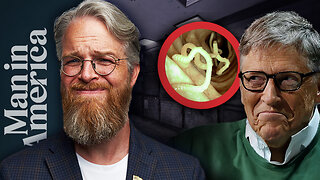Premium Only Content

Dr. Chris Shaw - PhD, Neurologist & Author - CHDC
This interview with Dr. Shaw is a must watch if you really want to get an idea of what is going on in the science and research world in relation to funding and how unbiased research gets out. He is an informative, funny and hopeful guest to interview.
He is the author of over 150 peer reviewed papers and four books. The latest book is 'Dispatches from the Vaccine Wars' is released August 2021 and I'll be doing a follow up interview for CHDC to cover this as well.
Dr. Shaw's Bio
My laboratory's key focus over the last few years has been on the unusual neurological disease of Guam and the Western Pacific, ALS-parkinsonism dementia complex (ALS-PDC). I view this disease as a kind of neurological Rosetta Stone able to unlock some of the key questions in neurological disease research. For example: what are the causes of ALS, Parkinson's, and Alzheimer's and what are the pre-clinical stages of each? Our approach has been to create an in vivo animal model in which we can look at behavioural changes in motor and cognitive functions, as well as systems, cellular and biochemical modifications as the disease process emerges over time. We have identified a novel class of neurotoxins in the course of our initial studies and are now beginning to understand the toxic mechanisms of action that lead to the death of neurons in the spinal cord and brain. The overall goal of this work is to identify key etiological factors involved in sporadic neurological disease and the early stages of the disease process. From the first could come effective prophylaxis; from the latter, early phase treatment before irreversible damage to the CNS has been done.
A second theme to our work is to seek potential therapeutic agents for existing neurological disease states using the above, and other, animal models. In particular, we are focusing our attention on progranulin, a neuroepithelial growth factor, and on a class of molecules called ginsenosides. Preliminary data with progranulin suggests that the molecule can exert powerful neuroprotective effects and perhaps even reverse early phase neurodegeneration.
The last aspect of our work, and one that is still emerging, is to look at the potential for compounds such as aluminum to be neurotoxic. We are interested in the types of aluminum compounds that can cause neurodegeneration, their route of administration, the impact of dose and duration, and the crucial but largely unexplored aspects of age and sex. These studies are just beginning, but show great promise to help us understand the origin of neurological disorders as diverse as autism spectrum disorder and Alzheimer's disease.
-
 1:00:34
1:00:34
Children's Health Defense Canada
2 months agoHow to Get Kids to Crave Real Food—Not Junk with Sherry Strong
2151 -
 2:16:36
2:16:36
Side Scrollers Podcast
18 hours agoStreamer KICKED OUT of Renaissance Fair for Misgendering + Spiderman MELTDOWN | Side Scrollers Live
39.8K7 -
 12:29
12:29
The Pascal Show
1 day ago $1.14 earnedLOCKED IN A DUNGEON?! Parents Arrested After 5 Children Found In 'Dungeon' At Home
9.96K3 -
 LIVE
LIVE
Lofi Girl
2 years agoSynthwave Radio 🌌 - beats to chill/game to
234 watching -
 3:07:24
3:07:24
FreshandFit
9 hours agoPrivileged Nigerian Thinks Women Created Everything: HEATED DEBATE
146K79 -
 5:57:27
5:57:27
SpartakusLIVE
10 hours agoNEW Update - BROKEN Attachment || Viewers REJOICE at the long-awaited Return of Their KING
77.9K -
 2:06:31
2:06:31
TimcastIRL
10 hours agoTrump To Deploy National Guard To Portland, Antifa Has Been WIPED OUT | Timcast IRL
195K164 -
 2:30:00
2:30:00
Laura Loomer
11 hours agoEP142: Loomer Prompts Calls For FBI To Investigate Palestinian Youth Movement
52.7K20 -
 1:26:34
1:26:34
Man in America
13 hours agoExposing the Cover-Up That Could Collapse Big Medicine: Parasites
59K32 -
 4:53:00
4:53:00
CHiLi XDD
9 hours agoTekken Fight Night
31.4K1